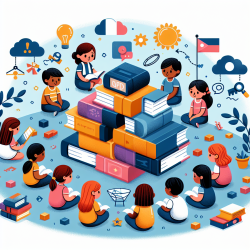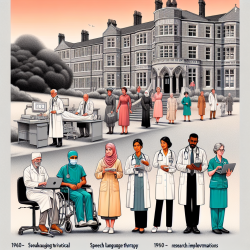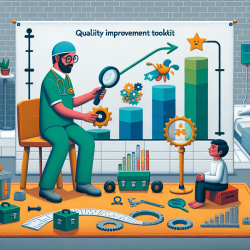As a Special Education Director, part of my role involves staying abreast of the latest research and methodologies that can aid in the development of our students' skills, particularly in areas of language and communication. One area that has garnered attention is the structuring of oral narratives—a critical aspect of language development that influences not only academic success but also social integration and personal expression. A resource that stands out in this domain is "Storybuilding: A Guide to Structuring Oral Narratives" by Peg Hutson-Nechkash. This guide provides a comprehensive framework for assessing and enhancing narrative skills in children, particularly those with language and learning disabilities.
The guide is divided into three main sections: an introduction to narrative development, assessment measures, and a remediation program. The introduction offers a concise yet thorough overview of narrative development, emphasizing the importance of narratives in child development and the common difficulties faced by children with language and learning disabilities. The developmental progression of narrative skills is presented in a clear, understandable manner, making it an invaluable resource for both practitioners and educators.
One of the strengths of "Storybuilding" is its detailed assessment measures. These tools allow practitioners to obtain a narrative sample and measure a child's ability to logically structure and relate a narrative. The inclusion of a supplementary form to examine the manner in which the narrative was told is particularly useful, as it provides insights into the child's expressive abilities beyond the structural aspects of storytelling.
The remediation program is the heart of the guide, offering a structured approach to improving narrative skills. It is divided into four phases: familiarization with story grammar elements, practice constructing narrations, critiquing narrations, and generalization of narrative knowledge. Each phase is accompanied by student worksheets and sample IEP goals, making it a practical tool for intervention. The use of children's literature to facilitate narrative development is a highlight, as it leverages existing resources and integrates them into the learning process in a meaningful way.
However, the guide is not without its limitations. While it provides a wealth of information for working with elementary school-aged students, its applicability to younger children is less clear. The assessment and remediation strategies are geared towards students who have already reached a certain level of language development, which may limit its use with preschoolers or those at the early stages of language acquisition.
Despite these limitations, "Storybuilding" is a valuable resource for speech-language pathologists, special education teachers, and other professionals working to support children with language and learning disabilities. Its comprehensive approach to narrative development—from assessment to intervention—makes it a standout resource in the field.
For practitioners looking to deepen their understanding of narrative skills and explore effective strategies for enhancement, "Storybuilding: A Guide to Structuring Oral Narratives" is a must-read. It not only provides the tools needed to assess and improve narrative skills but also offers a framework for thinking about narrative development in a holistic way. By integrating these strategies into practice, educators and therapists can make a significant impact on the language development of their students, fostering not just academic success but also social and emotional well-being.
To read the original research paper, please follow this link: Storybuilding: A Guide to Structuring Oral Narratives.










